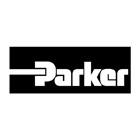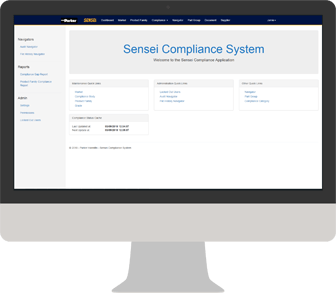
- Location: Worldwide
- Client Since: 2016
- Industry: Manufacturing
Parker Hannifin Manufacturing (PHM) is a multinational company with offices around the globe. PHM provides products and services globally to more than 400,000 customers. They are a global leader in motion and control technologies.
Compliance Application
SIS engaged with Parker in the UK to develop Sensei a compliance application to track product certification and compliance within multiple markets such as pharmaceutical and the food and beverages industry.
An item such as a filter must comply with different international standards depending on the market into which it is sold e.g. the pharmaceutical industry has different compliance requirements to the oil and gas industry, for the same product. A finished product is made up of sub-assemblies, components and materials which individually have their own compliance requirements. For a finished good to be compliant all its parts must also be compliant. Sensei manages multiple products in multiple markets with multiple compliance requirements and tracks the compliance status and the supporting documentary evidence to prove compliance.
Sensei is an intranet web application written in C#, HTML, Javascript and CSS3 with an SQL database to store data. The system utilises active directory for login and permissions. The Compliance Application features pdf reporting, complex queries, product/part management, BOM management compliance calculations, compliance management and automated imports/exports to JDE, Parker's ERP system.

Process Re-engineering
PHM utilised SIS services in a business process analysis exercise to develop a detailed specification for a Concerns and Returns system.
SIS worked closely with PHM business units over a 6 month period to understand the business requirements and to design a proposed software/database solution. The detailed specification included wireframe mock ups of all input forms, dashboards, maintenance screens, reporting requirements and a supporting relational database design. This document allowed PHM to obtain unambiguous development quotes from a number of software houses.